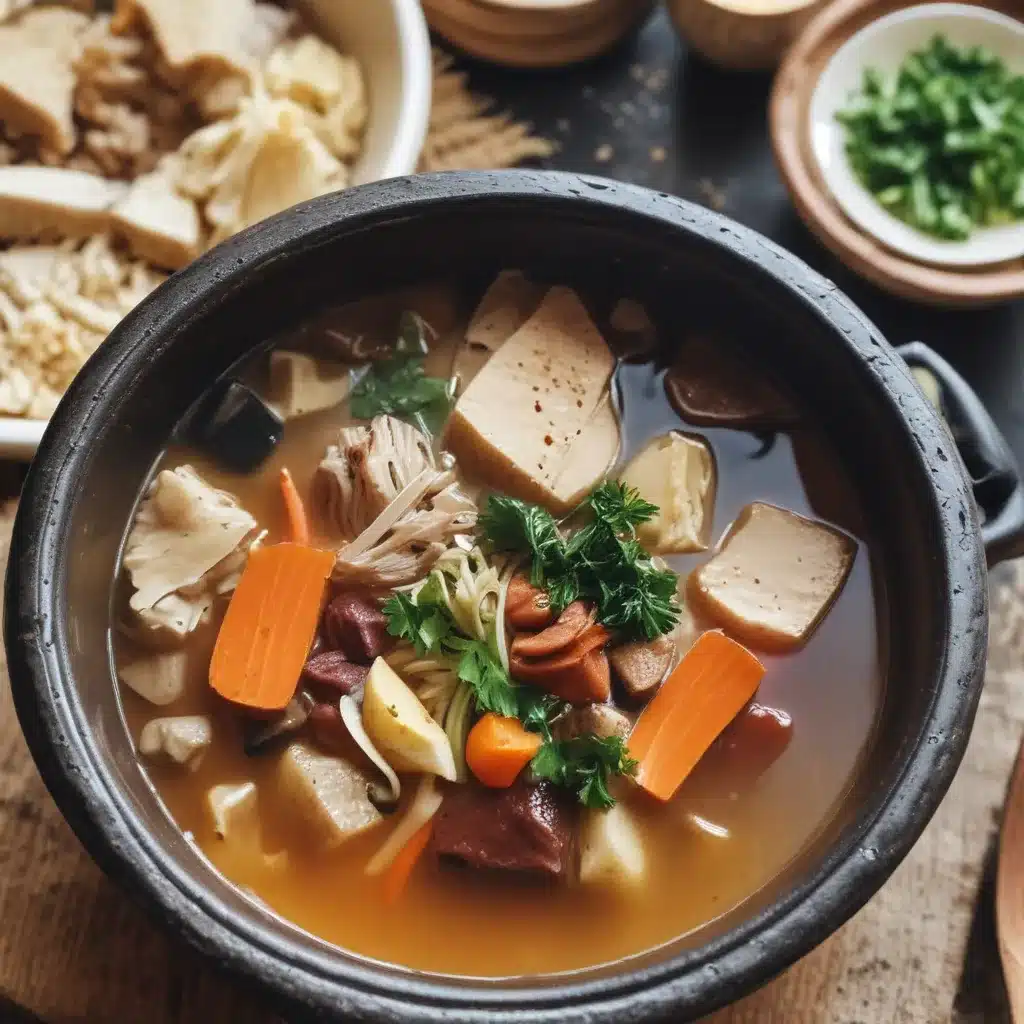
Discovering the Wonders of Korean Stone Pot Soups in Boston
As a self-proclaimed foodie and lover of all things cozy, I’ve always been drawn to the allure of Korean cuisine. But it wasn’t until I stumbled upon a hidden gem in the heart of Boston that my love for one particular dish was truly ignited – the steaming hot stone pot soup.
Let me set the scene for you: It was a chilly evening, the kind where the wind bites at your cheeks and the snow crunches underfoot. I was wandering the streets of Boston’s Koreatown, my nose lead me straight to the enticing aroma of simmering broths and caramelized meats. As I peered through the steamy windows of Korean Garden, I knew I had to venture inside and experience this culinary magic for myself.
The Art of Stone Pot Cooking
The moment I stepped through the doors, I was transported to a world of vibrant flavors and time-honored traditions. The centerpiece of the restaurant was the gleaming stone pots, each one a work of art in its own right. These specialized vessels, known as dolsot, are essential to the preparation of Korean stone pot soups and stews.
What makes the dolsot so special, you ask? Well, let me tell you – these pots are crafted from natural volcanic stone, which allows them to retain heat incredibly well. When filled with a rich, bubbling broth and an array of tantalizing ingredients, the dolsot works its magic, creating a sizzling, steaming presentation that’s as mesmerizing to watch as it is delicious to eat.
As I settled into my seat, I couldn’t wait to dive in and uncover the secrets of this captivating cooking method. I learned that the process of stone pot cooking is a time-honored tradition in Korean cuisine, passed down through generations. The intense heat of the dolsot not only infuses the ingredients with deep, complex flavors, but it also creates a delightfully crispy crust on the rice or noodles at the bottom of the pot.
Exploring the Flavors of Korean Stone Pot Soups
With my appetite piqued and my curiosity ignited, I scanned the menu, my eyes dancing from one tantalizing description to the next. Should I go for the classic Bibimbap, where the rice sizzles and crisps up in the dolsot’s embrace? Or perhaps the Budae Jjigae, a hearty stew that blends Korean and American influences, complete with smoky sausage and melted cheese?
In the end, I decided to let my taste buds be the guide, and I settled on the Kimchi Jjigae, a fiery and fragrant stone pot soup that’s considered a Korean comfort food staple. As the server carefully placed the steaming dolsot in front of me, I watched in awe as the broth bubbled and the kimchi sizzled, releasing a tantalizing aroma that made my mouth water.
With my first spoonful, I was immediately captivated by the depth of flavor. The broth was rich and warming, with the perfect balance of spicy, sour, and umami notes. The tender pork and soft tofu provided a delightful contrast in texture, while the vibrant kimchi added a tangy crunch that kept me coming back for more.
But the true star of the show, in my opinion, was the crispy rice crust that had formed at the bottom of the dolsot. As I scraped and scooped, I savored each bite, marveling at how the heat had transformed the simple grains into a caramelized, crunchy delight.
The Soul-Warming Power of Korean Stone Pot Soups
As I sat there, slowly sipping and savoring every morsel, I couldn’t help but feel a sense of comfort and contentment wash over me. There’s just something about the ritual of stone pot cooking that makes a meal feel so much more than just sustenance – it’s an experience that nourishes the soul as much as the body.
Maybe it’s the way the dolsot’s steady heat slowly coaxes out the flavors, or the mesmerizing sizzle that accompanies each bite. Or perhaps it’s the sense of community and tradition that these dishes embody, transporting you to a cozy Korean kitchen, where generations of cooks have perfected the art of stone pot alchemy.
Whatever the reason, I left Korean Garden that evening feeling utterly satisfied, both physically and spiritually. The warmth that had radiated from that steaming dolsot had seeped into my very being, leaving me with a renewed appreciation for the power of food to comfort, heal, and bring people together.
Embracing the Korean Stone Pot Soup Ritual
If there’s one thing I’ve learned from my foray into the world of Korean stone pot soups, it’s that this is a culinary experience that’s meant to be savored and celebrated. It’s not just about the food itself, but the entire ritual surrounding it – the careful preparation, the communal sharing, the meditative stirring and scraping.
So, the next time you find yourself craving a warm, nourishing meal that will soothe your soul, I urge you to seek out a local Korean restaurant and indulge in the magic of a steaming hot stone pot soup. Trust me, your taste buds (and your inner cozy-loving self) will thank you.
And if you happen to find yourself in Boston, be sure to visit Korean Garden – the stone pot soups there are truly something special. Who knows, maybe I’ll see you there, spoon in hand, reveling in the comfort and joy of this culinary tradition.
